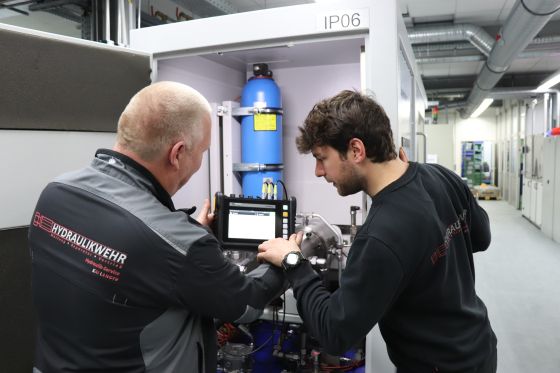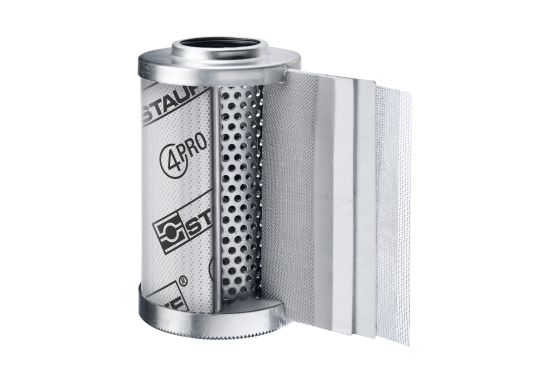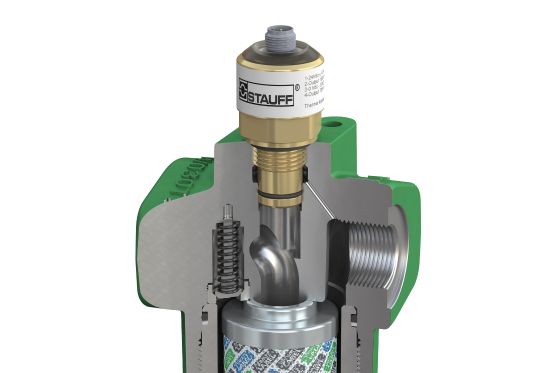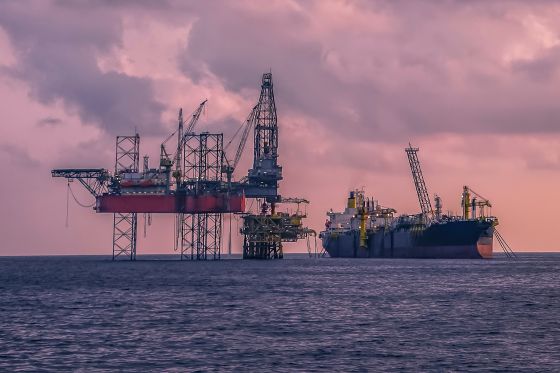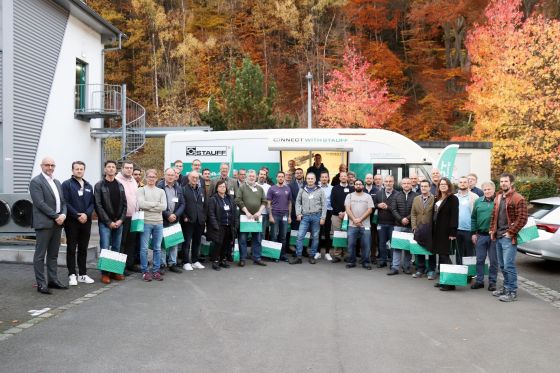Table of contents
- What is differential pressure?
- Why is differential pressure important in hydraulics?
- How does differential pressure arise in the system?
- Differential pressure measurement in practice: a comparison of methods
- Differential pressure and filter technology: interpreting warning signs correctly
- STAUFF solutions for differential pressure monitoring
- Practical tips for application
- Conclusion: using differential pressure as an early warning system
- FAQs
What is differential pressure?
Differential pressure is the pressure difference between two points in a hydraulic system—for example, before and after a filter element. It is measured in bar and psi, among other units, and is a meaningful indicator of flow resistance.
An increase in differential pressure usually means that a component (e.g., a filter) is creating more resistance—often due to contamination or blockages.
Why is differential pressure important in hydraulics?
Differential pressure is a key diagnostic tool for assessing:
- Filter condition and contamination
- System energy efficiency
- Power loss and temperature development
- Blockages in pipes or valves
In addition, targeted differential pressure measurement can also be used to evaluate the performance of individual components—for example, in cylinders: If the pressure drop across the cylinder is known, conclusions can be drawn about the actual force build-up and potential internal leaks.
Monitoring the differential pressure allows problems to be detected at an early stage before serious damage or downtime occurs.
How does differential pressure arise in the system?
Differential pressure is caused by the resistance that a medium experiences when flowing through a component. In practice, typical causes of increased differential pressure are:
- Contaminated filter elements
- Cross-sections that are too small or unfavorable pipe routing
- Missing or incorrectly configured bypass valves
- Wear or damage to valves and couplings
Differential pressure measurement in practice: a comparison of methods
We generally distinguish between two measurement approaches:
Temporary differential pressure measurement
Portable devices such as STAUFF PPC measuring devices, which are equipped with two pressure sensors and can be connected to two (or more) pressure sensors, are suitable for maintenance and fault analysis. These enable precise, simultaneous pressure measurement at two points. The differential pressure is calculated directly in the device and displayed on the screen.
Why a simple pressure gauge is not ideal:
- It only measures at one point.
- It must be moved for the second measurement.
- The differential pressure must be calculated manually.
- No simultaneous recording → inaccurate results.
Continuous differential pressure monitoring
Stationary components such as the following are suitable for continuous monitoring, for example in hydraulic filters:
- Optical or optical-electrical contamination indicators
- Limit switches with electrical feedback
- These enable reliable monitoring during operation.
Unlike conventional contamination indicators, the two-stage HI-D-024 version from STAUFF offers the advantage that it generates a first output signal before the maximum value is reached, thus providing timely warning of the upcoming filter change.
Differential pressure and filter technology: Interpreting warning signs correctly
A classic application for differential pressure measurement is the monitoring of hydraulic filters:
- A clean filter has a low differential pressure.
- As contamination increases, resistance increases.
- If a limit value is exceeded, a display signals that action is required.
- With a two-stage differential pressure indicator, a warning signal is given before the limit value is reached.
Advantages:
- Filters do not have to be changed “on suspicion.”
- Reduced downtime and spare parts requirements.
- Clearly definable maintenance cycles.
STAUFF solutions for differential pressure monitoring
STAUFF offers a wide range of components for monitoring differential pressure:
- Mechanical indicators: Display the current differential pressure via a pointer.
- Electrical switches: Send a signal as soon as a preset value is exceeded.
- Combined indicators: Mechanical-electrical for local display and remote transmission.
- PPC measuring devices: For mobile, precise analysis in maintenance and fault diagnosis.
- Integration into condition monitoring systems: Particularly relevant for critical applications.
Practical tips for use
Correct placement: Always measure directly before and after the filter.
Consider bypass valves: They influence the differential pressure curve.
Replace filter elements at the right time: Neither too early nor too late.
Keep an eye on limit values: STAUFF indicators offer simple traffic light displays or digital thresholds.
Conclusion: Use differential pressure as an early warning system
FAQs
What is the maximum differential pressure allowed for a filter?
Can I also record the differential pressure electronically?
Yes, with our differential pressure switches or sensors for integration into control systems or condition monitoring systems.
What happens if I continue to operate a filter despite high differential pressure?
There is a risk that the bypass valve will open, allowing unfiltered oil to enter the system—with the associated risk of damage.
How do I find the right display type for my system?
Our technical contacts will be happy to help you choose between mechanical, electrical, or combined solutions.


